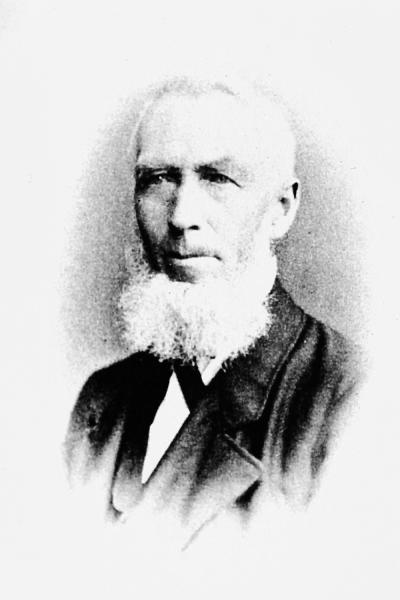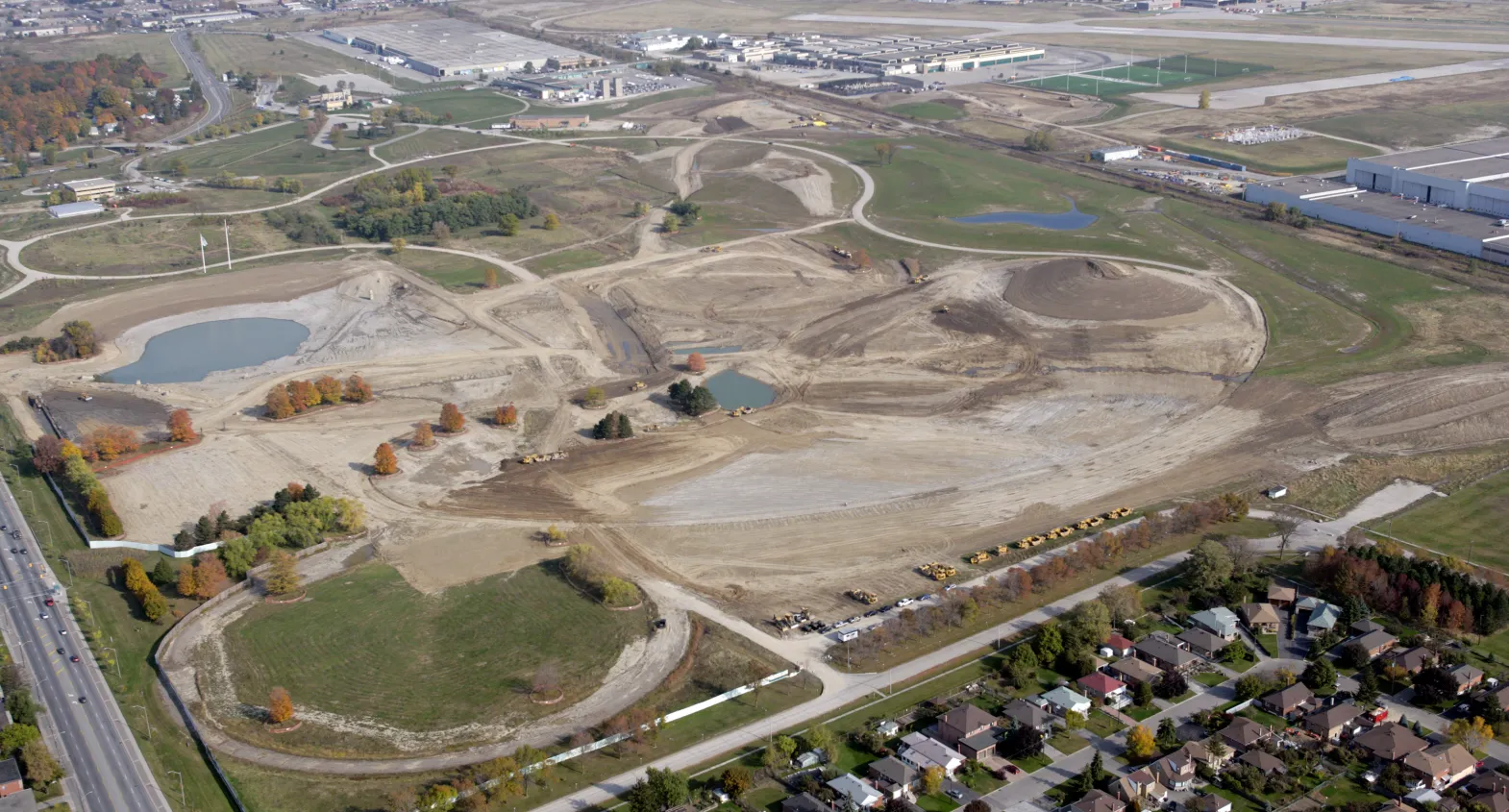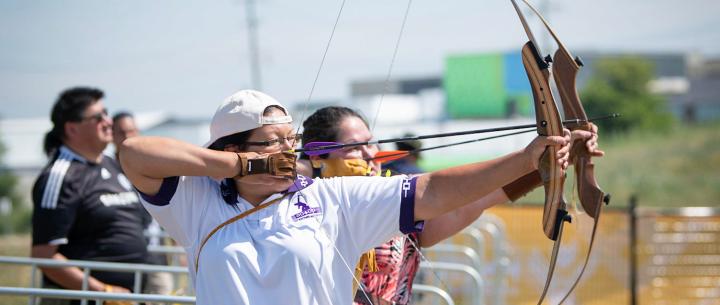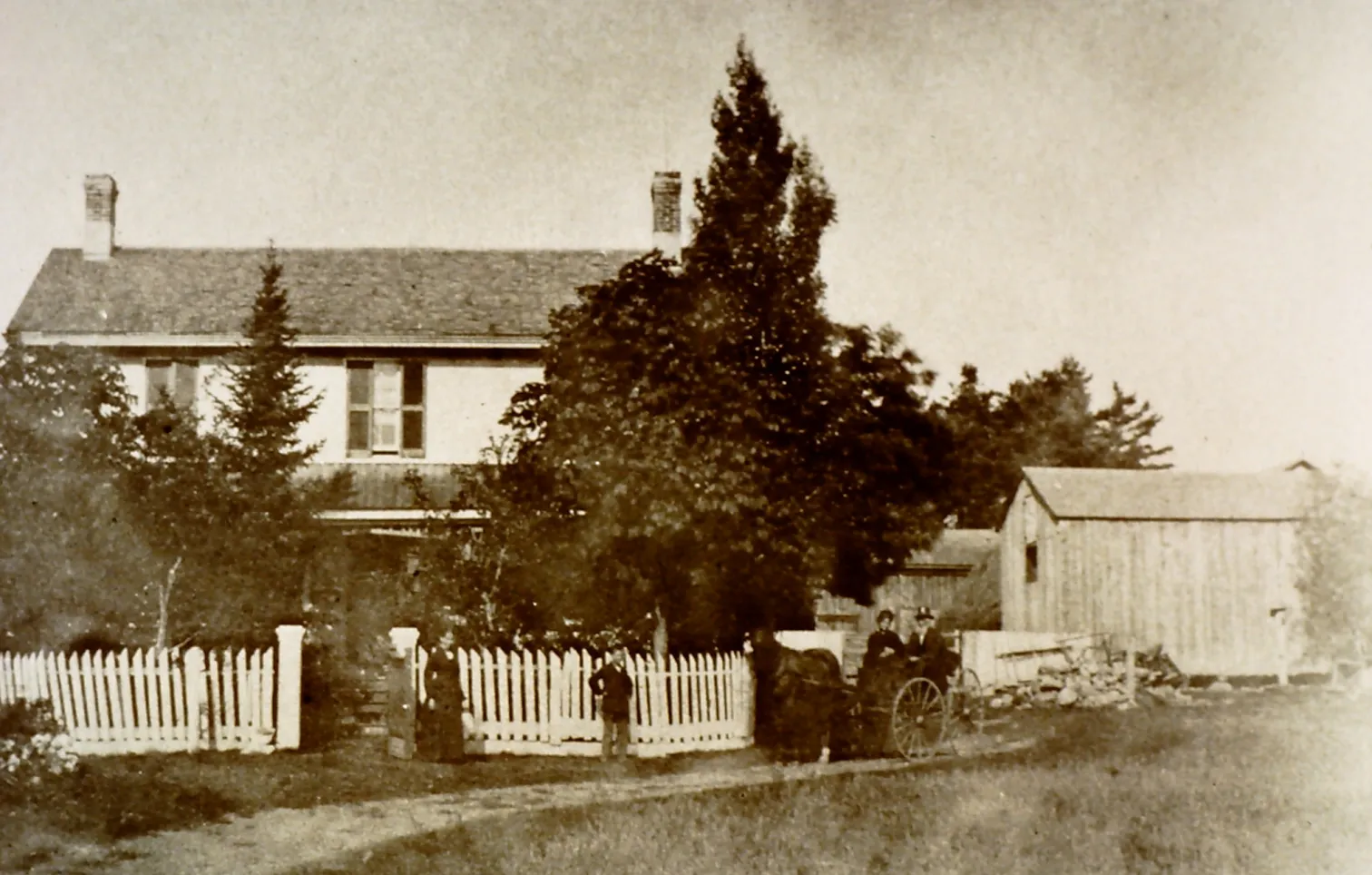Many of the first European settlers to arrive in Downsview came from Ireland in the 1830s. They cleared fields, built homes, and farmed on large parcels of land in the area that would now be known as Sheppard and Dufferin but, at the time, was called Dublin Village.



The Boakes and Bull-Perkins families established themselves in the area over several generations. Edward and Sarah Boake built a solid house, ‘Locust Lodge’, so called for the grove of locust trees surrounding it. Here, four generations of their family lived and prospered until the land was expropriated by the military in 1951 to expand the airfield.
When Downsview Park was being planned, the design team preserved a single row of maple trees along the Boake’s southern property line, marking the last remaining traces of the family farm’s fields. Downsview Park’s preserved woodlot is called Boake’s Grove (seen below). This is where Locust Lodge once stood and still features a healthy stand of black locust, silver maple, and walnut trees.

The name Downsview was conferred on the neighbourhood by another Irish family, John and Caroline Bull, who settled in the area in 1830 with their young children. The view, looking down the fields towards the city, was distinctive, earning the 200-acre farm the name ‘Downs View’.

Their son, John Perkins Bull, stuck around and became the local Justice of the Peace, earning him the nickname Squire Bull. He became quite involved in community and religious affairs, adapting his spacious home to accommodate services of the Wesleyan Methodists, and to function both as a modest courthouse and, in the basement, a temporary lock-up for convicts. In the 1960s the Perkins-Bull house was transformed into the North Park Nursing Home which is still in operation today.
More Stories

De Havilland Golf Centre
Downsview as the centre of Toronto’s golf universe? The idea might sound outrageous today, but if you were a golfer in Toronto in the 1950s and 60s, chances are you spent a good deal of time at the de Havilland Golf Centre, located in what is today Downsview Park.

2018 Masters Indigenous Games
Inter-tribal athletics competitions have been a meaningful part of Indigenous peoples’ way of life for millennia, and that tradition continues into the present day. The City of Toronto played host to the 2018 Masters Indigenous Games on July 13-15, which centred around a specially created “Cultural Village” at Downsview Park
